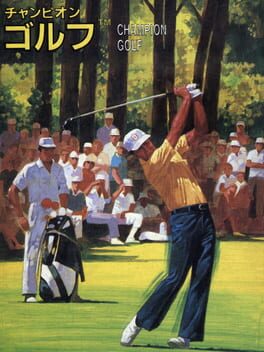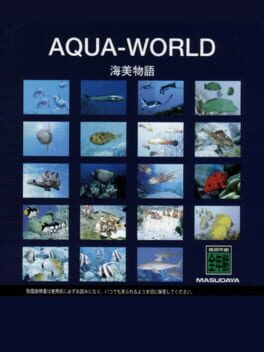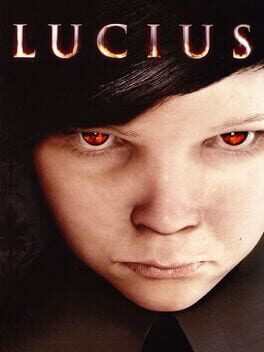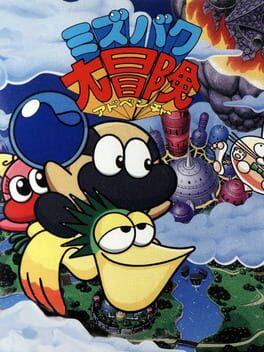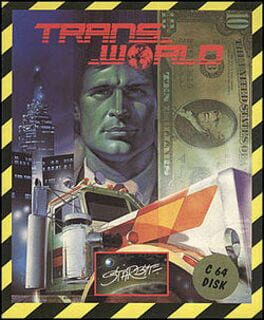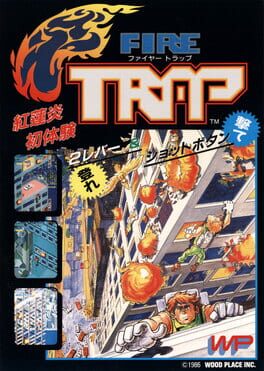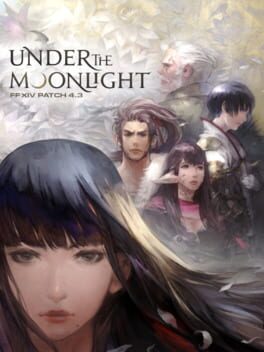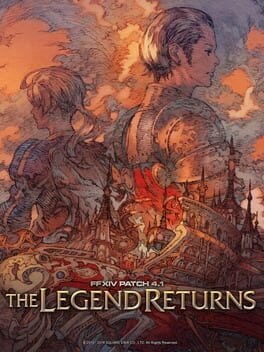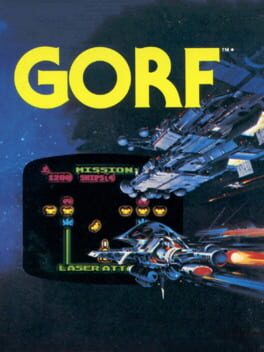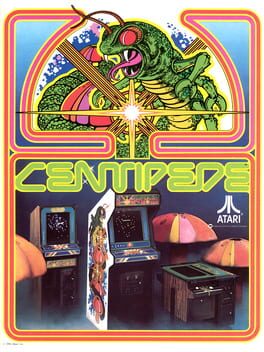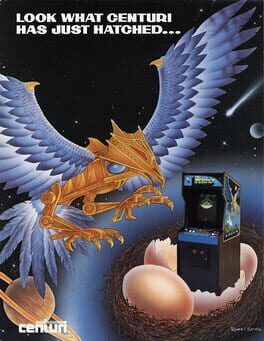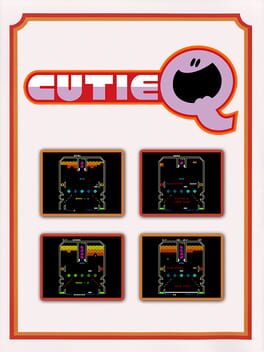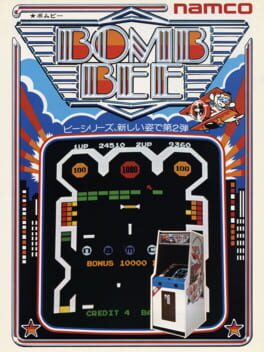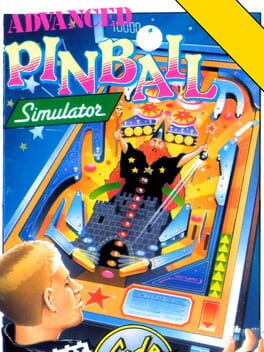belleshade
BACKER
1983
For many, the term FMV springs to mind exaggeration and oddity. Sprouting into popularity in the 90's with CD technology, the medium opened up new doorways in the games market to connect with the film industry. Actors, filmmakers, and producers could all invest in a new medium by recycling assets from their projects while the games industry could profit off of celebrity cultural capital injecting into the industry en masse. ["Repurposing", as Ted Hoff coined it (page 69)](https://books.google.com/books?id=wgsEAAAAMBAJ&lpg=PA69&vq=Johnny%20Mnemonic%3A%20The%20Interactive%20Action%20Movie%20%243%20million&pg=PA69#v=snippet&q=Johnny%20Mnemonic:%20The%20Interactive%20Action%20Movie%20$3%20million&f=false). However, many of these creatives found that translating production into video-based interactive games was an awkward process and the infamous performances from the era remain impressionable to this day.
Rarely though, do we speak of the games of the era that found something deeply beautiful in the form. I don't mean to say that the majorly known FMV games aren't beautiful; rather, that throughout the 90's there was a style of New Age FMV that tapped into a specific beauty of presenting images through the utopian ideals of the era's technology that needs to be recognized specifically aside from FMV at large.
I'm talking about CD-I Tetris. I'm talking about the Angel Paradise series. I'm talking about Aqua World: Umi Monogatari.
Aqua World: Umi Monogatari is a game about experiencing fish. You look at fish, you read about fish, you watch fish swim. That's pretty much the entire game, there's no walking around, no mechanics, you click a button and just watch fish. It's an absolutely breathtaking experience.
Part of the game's enjoyment is similar to that of watching a nature documentary. You get to see creatures moving around their ecosystem and doing their thing. What sets Aqua World: Umi Monogatari apart from nature documentary though is that it doesn't have any film of real fish, all of them are CGI videos of fish rendered in CDROM video. Their animations are repetitive, stiff, and float around in empty blue skyboxes which the camera occasionally teases as a real world space with reflections above. The models are lowpoly and just slightly cartoonish in the lack of details in which they are rendered. At times, they simply hover in space, motionless. And yet, this is where the beauty of the game lies.
Turning on Electric Blue mode, which is a rad name for your fish viewing game mode by the way, the player can choose from a variety of bouncing bubbles that determine a viewing order of fish videos. Upon playing, these CGI fish wander around on screen, each species with a different song to represent their personality. A haunting distorted synth wobbles as the Cresthead Flounder creeps on the ocean floor. A playful little tune sings as the Spotfin Frogfish wanders around curiously. If you have ever stopped in a moment of a videogame to look at the way the virtual ecosystem presents beauty to you then you have experienced a similar bliss as this one.
Aqua World is a game for enjoying the bliss of the videogame image. It is a game for finding peace that resides in the videogame image. It's in this embrace of bliss in the videogame image that I consider it to be "New Age FMV".
There aren't many interactions asked of the player in Aqua World: Umi Monogatari outside of this mode. On the menu there are two other options outside of Electric Blue; Data Fish, and Mermaid. Each of these modes essentially give the player different ways to experience the various species that the game presents. Data Fish presents encyclopedia entries, photographs, and 3D model inspections on the fish. Mermaid lets the player fill an aquarium with the game's included species and swim around to look at them.
It's easy to imagine Aqua World: Umi Monogatari gaining the reputation of being a "non-game" for the lack of deep mechanics for the player to engage in. However, I would argue that to play a videogame is to simply make an emotional connection with an intermix of hardware and software technologies. That can mean that simply moving your fish sprite around a virtual aquarium for the joy of seeing and hearing the ecosystem presented. It can mean reading through the encyclopedia entries of fish and seeing all the little photos and models included. It can mean choosing a selection of fish species clips to view on repeat and fall asleep to.
And what more could we ask for in videogames, than to find something which resonates with ourselves so deeply?
Rarely though, do we speak of the games of the era that found something deeply beautiful in the form. I don't mean to say that the majorly known FMV games aren't beautiful; rather, that throughout the 90's there was a style of New Age FMV that tapped into a specific beauty of presenting images through the utopian ideals of the era's technology that needs to be recognized specifically aside from FMV at large.
I'm talking about CD-I Tetris. I'm talking about the Angel Paradise series. I'm talking about Aqua World: Umi Monogatari.
Aqua World: Umi Monogatari is a game about experiencing fish. You look at fish, you read about fish, you watch fish swim. That's pretty much the entire game, there's no walking around, no mechanics, you click a button and just watch fish. It's an absolutely breathtaking experience.
Part of the game's enjoyment is similar to that of watching a nature documentary. You get to see creatures moving around their ecosystem and doing their thing. What sets Aqua World: Umi Monogatari apart from nature documentary though is that it doesn't have any film of real fish, all of them are CGI videos of fish rendered in CDROM video. Their animations are repetitive, stiff, and float around in empty blue skyboxes which the camera occasionally teases as a real world space with reflections above. The models are lowpoly and just slightly cartoonish in the lack of details in which they are rendered. At times, they simply hover in space, motionless. And yet, this is where the beauty of the game lies.
Turning on Electric Blue mode, which is a rad name for your fish viewing game mode by the way, the player can choose from a variety of bouncing bubbles that determine a viewing order of fish videos. Upon playing, these CGI fish wander around on screen, each species with a different song to represent their personality. A haunting distorted synth wobbles as the Cresthead Flounder creeps on the ocean floor. A playful little tune sings as the Spotfin Frogfish wanders around curiously. If you have ever stopped in a moment of a videogame to look at the way the virtual ecosystem presents beauty to you then you have experienced a similar bliss as this one.
Aqua World is a game for enjoying the bliss of the videogame image. It is a game for finding peace that resides in the videogame image. It's in this embrace of bliss in the videogame image that I consider it to be "New Age FMV".
There aren't many interactions asked of the player in Aqua World: Umi Monogatari outside of this mode. On the menu there are two other options outside of Electric Blue; Data Fish, and Mermaid. Each of these modes essentially give the player different ways to experience the various species that the game presents. Data Fish presents encyclopedia entries, photographs, and 3D model inspections on the fish. Mermaid lets the player fill an aquarium with the game's included species and swim around to look at them.
It's easy to imagine Aqua World: Umi Monogatari gaining the reputation of being a "non-game" for the lack of deep mechanics for the player to engage in. However, I would argue that to play a videogame is to simply make an emotional connection with an intermix of hardware and software technologies. That can mean that simply moving your fish sprite around a virtual aquarium for the joy of seeing and hearing the ecosystem presented. It can mean reading through the encyclopedia entries of fish and seeing all the little photos and models included. It can mean choosing a selection of fish species clips to view on repeat and fall asleep to.
And what more could we ask for in videogames, than to find something which resonates with ourselves so deeply?
2012
I once had a magazine article covering the Lucius series killed by the magazine editor because of just how deeply bigoted the entire series was and how much of a storm I was kicking about it. Maybe I'll bring it back some day but I just don't have any desire to think about this series more than the moment I noticed it randomly on backloggd just now.
I wish I could give the game a lower rating.
I wish I could give the game a lower rating.
1990
I will admit that when I play games, there is a certain bias that emerges from a game's combination of aesthetic, enthusiast opinions, popularity. If reviews of an old Sega Saturn game with a crayon aesthetic that didn't sell well was highly rated, I would expect the game to be this sort of, "hidden treasure". Then I would play the game with a much more open mind and optimistic point of view. The apparition of a combined asymmetrical communal presented reality, becoming real by my weighted hand.
With Liquid Kids, I totally expected it to be subpar based on middling reviews from mutuals I follow on the site. I immediately started and my brain jumped to; "Oh you have to knock over the enemies and kill them like Mario Bros '83, augh one of my least favorite mechanics". However, there's just so much.....charm to Liquid Kids that transformed my enjoyment fairly quickly. The animation and design of all the creatures and the background sprites are majorly pleasing. Especially the way that the protagonist character has moments with pencil drawn visuals showing. Plus the sound design by Kazuko Umino and Hisayushi Ogura are absolutely adorable and brings a satisfying feeling to the brain when doing things like inserting credits or throwing bubbles.
The flaw in the game that could possibly connect its not-stellar reviews remains in the primary mechanic and increasingly difficult level design. You cannot jump or collide with any enemy that has not already been wet. Due to the increasing difficulty on a single life with enemies continuing to spawn and some lacking communication about how enemies react to water, at times navigating the game can feel unfair. However, the more I played the game it didn't really feel too unfair so much as the difficulty felt very intentionally considered because it was an arcade game made for multiple plays. (Although that form of difficulty design always has some criticisms to take into consideration in its own right). Considering this, it didn't feel much different from playing one of those "brutal"/kaizo games designed to be very intentionally specific about its difficulty.
Liquid Kids charm continued to shine through.
Yet still, even as I neared the end of the game I sought out this fantasy of communal relatability. Where were the glaring imperfections? What was I missing that made it so middling? Was there context with a developer that I am not aware of? Even writing the first half of this review I was tempted to be more harsh on it due to this feeling.
I think Liquid Kids is cool, but I'm not writing this overly convoluted text to defend it. I realize that this pressure to experience something just because others have is a false reality presented by the influence the non-existent entity that is "unified opinion". I just wanted to write out how this cute little game of bubbles and creatures made me aware of how I experience the clash between subjective taste and the illusion of objective truth to create simulacrum of belief. But also, Liquid Kids is cool.
With Liquid Kids, I totally expected it to be subpar based on middling reviews from mutuals I follow on the site. I immediately started and my brain jumped to; "Oh you have to knock over the enemies and kill them like Mario Bros '83, augh one of my least favorite mechanics". However, there's just so much.....charm to Liquid Kids that transformed my enjoyment fairly quickly. The animation and design of all the creatures and the background sprites are majorly pleasing. Especially the way that the protagonist character has moments with pencil drawn visuals showing. Plus the sound design by Kazuko Umino and Hisayushi Ogura are absolutely adorable and brings a satisfying feeling to the brain when doing things like inserting credits or throwing bubbles.
The flaw in the game that could possibly connect its not-stellar reviews remains in the primary mechanic and increasingly difficult level design. You cannot jump or collide with any enemy that has not already been wet. Due to the increasing difficulty on a single life with enemies continuing to spawn and some lacking communication about how enemies react to water, at times navigating the game can feel unfair. However, the more I played the game it didn't really feel too unfair so much as the difficulty felt very intentionally considered because it was an arcade game made for multiple plays. (Although that form of difficulty design always has some criticisms to take into consideration in its own right). Considering this, it didn't feel much different from playing one of those "brutal"/kaizo games designed to be very intentionally specific about its difficulty.
Liquid Kids charm continued to shine through.
Yet still, even as I neared the end of the game I sought out this fantasy of communal relatability. Where were the glaring imperfections? What was I missing that made it so middling? Was there context with a developer that I am not aware of? Even writing the first half of this review I was tempted to be more harsh on it due to this feeling.
I think Liquid Kids is cool, but I'm not writing this overly convoluted text to defend it. I realize that this pressure to experience something just because others have is a false reality presented by the influence the non-existent entity that is "unified opinion". I just wanted to write out how this cute little game of bubbles and creatures made me aware of how I experience the clash between subjective taste and the illusion of objective truth to create simulacrum of belief. But also, Liquid Kids is cool.
TBD
1986
I love how the dual joystick arm climbing almost singlehandedly expresses this game’s action figure puppeteering aesthetic. The plastic shiny cube diorama look of everything adds to that as well.
The kinetic mess of moving joysticks amidst a shmup-lite maze really feels like Fire Trap is clear precedent to the more contemporary popular awkward body button mashers (QWOP, Mount Your Friends, Octodad).
The kinetic mess of moving joysticks amidst a shmup-lite maze really feels like Fire Trap is clear precedent to the more contemporary popular awkward body button mashers (QWOP, Mount Your Friends, Octodad).
I loooove expressive boss fights. Breaking the battle halfway to introduce how the character's memories of despair are feeding into her pain is extremely cool! It's something I wish this game did way more often and maybe it will in the later content! That being said, the narrative just kind of flops. A trend for the Stormblood patches!
In this patch we learn that Yotsuyu's plot never really held any agency to begin with, but she was merely a pawn to be used in the bureaucracy of the empire (or the ascians? who knows!). This isn't to say that Yotsuyu has no reason to exist narratively. However, that reason is largely for her to bookend the Stormblood arc with a dump of memories aiming for us to feel sympathy for her. And....outside of the cool fight I mentioned I don't think it works that well.
I think it feels pretty cheap to spend an entire expansion fighting against a fascist tyrant, finish their arc, and then as an epilogue bring them back for a couple hours to give you a backstory dump to sympathize with them. If you wrote her trauma to engage with the systems of the world we have engaged in over hundreds of hours then maybe it would be better. If you integrated this with the story even the slightest during the expansion's narrative then maybe it would be more effective. Yet instead they just lazily throw in that her parents sold her to a brothel as a one note trauma-shock for the player to forget the bigger picture. Then she has to die again! There's no actual care to engage with her sale into sex work, there's no care to engage how those systems exist in Eorzea. It's really just a one minute note and I think that's so lame!
Right now I am most interested in how the alliance between Doma and Garlemand may lead to displaying how the tensions of bureacracy restrict actual material action from happening. However, Asahi was the primary character expressing that area and he's gone now so we will see what happens!
Haven't done the guest designed Ivalice dungeon but excited to!
In this patch we learn that Yotsuyu's plot never really held any agency to begin with, but she was merely a pawn to be used in the bureaucracy of the empire (or the ascians? who knows!). This isn't to say that Yotsuyu has no reason to exist narratively. However, that reason is largely for her to bookend the Stormblood arc with a dump of memories aiming for us to feel sympathy for her. And....outside of the cool fight I mentioned I don't think it works that well.
I think it feels pretty cheap to spend an entire expansion fighting against a fascist tyrant, finish their arc, and then as an epilogue bring them back for a couple hours to give you a backstory dump to sympathize with them. If you wrote her trauma to engage with the systems of the world we have engaged in over hundreds of hours then maybe it would be better. If you integrated this with the story even the slightest during the expansion's narrative then maybe it would be more effective. Yet instead they just lazily throw in that her parents sold her to a brothel as a one note trauma-shock for the player to forget the bigger picture. Then she has to die again! There's no actual care to engage with her sale into sex work, there's no care to engage how those systems exist in Eorzea. It's really just a one minute note and I think that's so lame!
Right now I am most interested in how the alliance between Doma and Garlemand may lead to displaying how the tensions of bureacracy restrict actual material action from happening. However, Asahi was the primary character expressing that area and he's gone now so we will see what happens!
Haven't done the guest designed Ivalice dungeon but excited to!
In terms of story, Rise of a New Sun really feels so so weak and I don't have too much to say because of that. Yotsuyu having her memory lost only to become an innocent girl without agency that just loves eating dango is super lame. I generally am not a fan of "the villain lost their memory so now they are with the good guys!" because it's very often used in a lazy manner. This is no different, and I don't have much more to say than that.
That being said, Omega: Sigmascape, subaquatic voyages, musician rehaul, and some dungeons are in here that are nice so it's a win some lose some situation.
That being said, Omega: Sigmascape, subaquatic voyages, musician rehaul, and some dungeons are in here that are nice so it's a win some lose some situation.
This review contains spoilers
Final Fantasy XIV has displayed how it's focus on characters and ever expanding systems of play continues to make it one of the more satisfying MMOs to keep coming back to. However, FFXIV has always struggled with its larger narrative engaging with global political systems. I haven't gone through Shadowbringers or Endwalker, so it's possible this changes as I play further. However, after playing the base game and two expansions, it's clear that while there is enjoyable political theatre putting revolutionary action on display throughout the XIV franchise, rarely is there an desire to reimagine what revolution can truly be.
In 4.1, The Legend Returns, Final Fantasy XIV presents the questions of what the people of Ala Mhigo want the city to be once they have achieved liberation from their fascist oppressors. What type of city do they want to build? What does justice from their oppressors mean when they have a clean slate to define it? Who do we include in these conversations?
Unfortunately, FFXIV doesn't have many enlightening answers beyond leaving monarchy to the past for the sake of republic. While this is certainly a good first step, 4.1 shows displays how hollow of an act this is.
This is first expressed through the quite nuanced question of how they are going to handle Ala Mhigans that sided with the Garleans as a means to survive. The characters recognize that living in a fascist state is not a black or white situation, but one where the people involved navigated the system in the best ways they can to survive. Unfortunately, this question only leads to a centrist reflection on oppression through rehabilitation of Fordola, one of the primary military hands of Zenos who killed many members of the Ala Mhigan resistance.
Everyone in the resistance wants Fordola dead for the massive death toll she inflicted upon them. Yet the main cast is less interested in vengeance, and moreso in determining if they can somehow convince Fordola that there is good in her. This leads to a flashback where we learn that Fordola joined the empire's cause because her father was killed by Ala Mhigans for working with the Garleans. This, is not deeply considered in the slightest as the game holds no sympathy or understanding for why the people are angry, but instead depicts them as violent people with exaggerated nasty expressions. These are the bad Ala Mhigans, these are the less considerate Ala Mhigans, these are the unruly Ala Mhigans. It's shocking that after an entire expansion about rallying people together to destroy an oppressive government that its now stepping back to depict those same people with such a shallow, fascist lens.
This understanding of Fordola rings shallow because it sympathizes with her reasoning to follow the fascist cause. Rehabilitation in a post-liberated world is revolutionary imagining that is largely controversial. However, rehabilitation is not revolutionary because there is a believe that deep down those being rehabilitated have sympathetic reasons for their actions. No, it is revolutionary because it reimagines a world where state inflicted violence is restructured into constructive, effective care for the community at large. Fordola doesn't need to be sympathized with in order to justify her rehabilitation, but Final Fantasy XIV can't imagine that.
And what's unfortunate is that I think this arc is so close to expressing something meaningful. It is true that there is a pipeline to fascism where people side with empires of power because they do not consider histories of oppression and accept the state's narrative of any citizen-lead violence being morally wrong. It's true that infighting between people with a common cause can mislead liberatory action. But that nuance is just. not. present. in the slightest and does not present enough consideration to be interpreted with good will as such. Instead, Fordola is presented as a tragic figure simply because her father was killed and for that reason alone we should understand why she sided with the fascists. Meeehhhhh.
Secondly, the player is called to spend time with Nanamo as she determines how to manage Ul'Dah without Rauban by her side. In this instance, there really isn't any complexity happening. Nanamo determines that the best way for her to grow up and be independent is to stop being "charitable" towards the Ala Mhigan rebuilding efforts and find a way to capitalize off of it. We do get some nice little backstories about how Rauban and Nanamo came to be close but really this is largely distasteful and disappointing.
Lastly, 4.1 continues the trend of depicting the beastmen of the world as inferior, other, and senselessly violent. From the construction of the base game's foundation, the citizens of Eorzean state powers have always been positioned as morally correct over the Beastmen tribes. At this point in the game that fact has not changed. Specifically, in this patch the Ananta are given a chance to work together with the people of Ala Mhigo to determine the future of the City. However, instead of giving the Ananta a complex relationship between their faith and cooperating with others, they are cartoonishly made to be shallow, violent religious fanatics. Just another native tribe for the state powers to subjugate, even in the most opportune time for the game to consider this cliche, a reimagining of a community.
And in typical FFXIV fashion, it has to all wrap up in a way where all the characters can smile at each other and tell the warrior of light that they just can't wait to see what the future holds in store for them next. Because for FFXIV the narrative will always value the sacred warmth of friendship over reimagining liberation.
In 4.1, The Legend Returns, Final Fantasy XIV presents the questions of what the people of Ala Mhigo want the city to be once they have achieved liberation from their fascist oppressors. What type of city do they want to build? What does justice from their oppressors mean when they have a clean slate to define it? Who do we include in these conversations?
Unfortunately, FFXIV doesn't have many enlightening answers beyond leaving monarchy to the past for the sake of republic. While this is certainly a good first step, 4.1 shows displays how hollow of an act this is.
This is first expressed through the quite nuanced question of how they are going to handle Ala Mhigans that sided with the Garleans as a means to survive. The characters recognize that living in a fascist state is not a black or white situation, but one where the people involved navigated the system in the best ways they can to survive. Unfortunately, this question only leads to a centrist reflection on oppression through rehabilitation of Fordola, one of the primary military hands of Zenos who killed many members of the Ala Mhigan resistance.
Everyone in the resistance wants Fordola dead for the massive death toll she inflicted upon them. Yet the main cast is less interested in vengeance, and moreso in determining if they can somehow convince Fordola that there is good in her. This leads to a flashback where we learn that Fordola joined the empire's cause because her father was killed by Ala Mhigans for working with the Garleans. This, is not deeply considered in the slightest as the game holds no sympathy or understanding for why the people are angry, but instead depicts them as violent people with exaggerated nasty expressions. These are the bad Ala Mhigans, these are the less considerate Ala Mhigans, these are the unruly Ala Mhigans. It's shocking that after an entire expansion about rallying people together to destroy an oppressive government that its now stepping back to depict those same people with such a shallow, fascist lens.
This understanding of Fordola rings shallow because it sympathizes with her reasoning to follow the fascist cause. Rehabilitation in a post-liberated world is revolutionary imagining that is largely controversial. However, rehabilitation is not revolutionary because there is a believe that deep down those being rehabilitated have sympathetic reasons for their actions. No, it is revolutionary because it reimagines a world where state inflicted violence is restructured into constructive, effective care for the community at large. Fordola doesn't need to be sympathized with in order to justify her rehabilitation, but Final Fantasy XIV can't imagine that.
And what's unfortunate is that I think this arc is so close to expressing something meaningful. It is true that there is a pipeline to fascism where people side with empires of power because they do not consider histories of oppression and accept the state's narrative of any citizen-lead violence being morally wrong. It's true that infighting between people with a common cause can mislead liberatory action. But that nuance is just. not. present. in the slightest and does not present enough consideration to be interpreted with good will as such. Instead, Fordola is presented as a tragic figure simply because her father was killed and for that reason alone we should understand why she sided with the fascists. Meeehhhhh.
Secondly, the player is called to spend time with Nanamo as she determines how to manage Ul'Dah without Rauban by her side. In this instance, there really isn't any complexity happening. Nanamo determines that the best way for her to grow up and be independent is to stop being "charitable" towards the Ala Mhigan rebuilding efforts and find a way to capitalize off of it. We do get some nice little backstories about how Rauban and Nanamo came to be close but really this is largely distasteful and disappointing.
Lastly, 4.1 continues the trend of depicting the beastmen of the world as inferior, other, and senselessly violent. From the construction of the base game's foundation, the citizens of Eorzean state powers have always been positioned as morally correct over the Beastmen tribes. At this point in the game that fact has not changed. Specifically, in this patch the Ananta are given a chance to work together with the people of Ala Mhigo to determine the future of the City. However, instead of giving the Ananta a complex relationship between their faith and cooperating with others, they are cartoonishly made to be shallow, violent religious fanatics. Just another native tribe for the state powers to subjugate, even in the most opportune time for the game to consider this cliche, a reimagining of a community.
And in typical FFXIV fashion, it has to all wrap up in a way where all the characters can smile at each other and tell the warrior of light that they just can't wait to see what the future holds in store for them next. Because for FFXIV the narrative will always value the sacred warmth of friendship over reimagining liberation.
1981
GORF is fucked up.
GORF is space travel if you were suffocating inside of a trash bag.
GORF is a dance of lasers smashing through ear-splitting TV static.
GORF doesn't give a shit that you can tell it has completely stolen half of its design from other games of the time.
GORF is fucked up.
GORF is fucking rad.
GORF is space travel if you were suffocating inside of a trash bag.
GORF is a dance of lasers smashing through ear-splitting TV static.
GORF doesn't give a shit that you can tell it has completely stolen half of its design from other games of the time.
GORF is fucked up.
GORF is fucking rad.
1981
What's innovative about Centipede in the time period of slide and shoots is designing the game so that the player clearly communicated direct actions to effect the movement of incoming enemy ships. Prior to Centipede ships moved based on information such as player placement or number of enemies left. However, the transformation of enemy ships into mushroom blocks create a new depth of strategy to the game that I find to be very refreshing after playing a decent amount of 1979/1980 slide and shoots. On top of this, Centipede plays with rhythm depending on the length of centipedes which is an extremely smart designed communication. It also just has a nice palette, it plays with pastels and deeper tones that I think are pleasant. Overall, this is a very smart evolution in the genre.
1980
As the player ship blasts at the flying beetle enemy starfighters, they jet boost away with sparks popping behind them, snapping around the deep blue stars of the galaxy. An enemy ship collides with the player ship and with a bright yellow cloud of explosions as the ships shatter to pieces. When the player respawns and defeats all of the enemies, a strange series of orbs fly down in a wobbly wave pattern and eventually hatch into matte blue birds more than triple the size of my player ship, each with a ghoulish grin. Somehow, the player ship survives and flies through only to find a great mothership so big that it fills almost all visible space.
I am frightened.
I am frightened.
1979
Despite being Namco's third iteration on the Breakout/Pinball hybrid, Cutie Q felt like the game I had the least enjoyable time with. In Bee Gee and Bomb Bee, I appreciated the ways that they were attempting to blend pinball elements like bumpers and flippers into the game. With Cutie Q, those kinetic elements are replaces with little blobs, and smiley faces that don't provide much feedback upon hitting.
I'm honestly a bit disappointed because I think Bomb Bee was so close to being a mix that felt good. So I would have loved to have seen more iteration with the pinball style.
That being said, it's cool that this game's mascot design and little ghosts were an artistic push that would lead to the design of pac-man and I'm all for making your game a bit cartoony. However the loss of virtual haptics alongside the game overall being a bit more sluggish only makes the cartoon direction feel hollow.
Maybe there will be a fourth Gee Bee game some day...?
I'm honestly a bit disappointed because I think Bomb Bee was so close to being a mix that felt good. So I would have loved to have seen more iteration with the pinball style.
That being said, it's cool that this game's mascot design and little ghosts were an artistic push that would lead to the design of pac-man and I'm all for making your game a bit cartoony. However the loss of virtual haptics alongside the game overall being a bit more sluggish only makes the cartoon direction feel hollow.
Maybe there will be a fourth Gee Bee game some day...?
1979
A͍̭̒̔̇̑̉D͚̩̫̙̰̭́ͯ͋̅̄͑͐́V̧̡̮̱ͤͯǍ̴͓̬͙̮̥͙̕N̵̖̖̅̈̆ͯ̈̉͐C̸͙̖̱͖̟̮̜̜͊̈̌ͭ̀͑͛͝ͅĖ͕̙͈͆̆̈̊̽ͮͫ̚D̷̹ͮ́ͣ͛̅ ̷̨̝̮̩̖͔̱͈͊͆ͦ͛ͅP̷̣̹̱̰̭̿̊ͫͧ͂̀Ỉ̧̜͔ͭ̃ͨͩ̋́̅͋ͅN͖̱̜ͧͯ̀̐B̮̤̩͖͕̙̪ͭ̋͒̈́̇ͧ̌̾ͤͅÁ̷̫̗̬ͭ̂͝ͅL͉͕͙͕͕ͤ̇ͭ͂̑ͬL͍̹̽̃ͮ̅̈̃͌ ̣̯̣͉̺ͪ͊̂̑ͫͫ͗S̡͕͖̗͎̼ͨI̡̛̫̰̝͖̙̝̤͗ͬ́̏̉͗ͅM̠̖̋̉̅̽̿ͧ̅̓͘U̶̷̝͙ͬͨ͒ͧ̐ͥ̀Ľ̸̟͓͎͈̈́͂ͭ̃ͪ̓͟A̯͇͕͎͙̻̿̂̒͒͐͛̇T̵̓̈́ͧ̍̓͏̞̮Ȏ̸̲̩̝͑̊̅̆̏R̥̤̤̰̜͇̩̬ͯ̈̆ͬ̄ͭ
